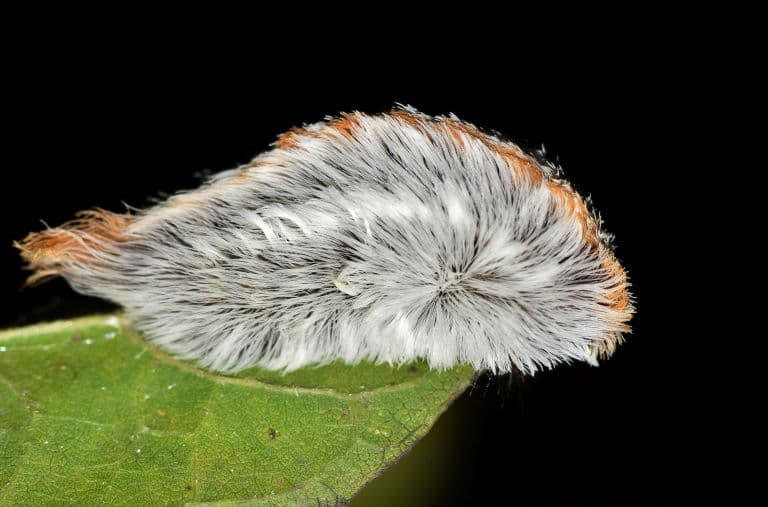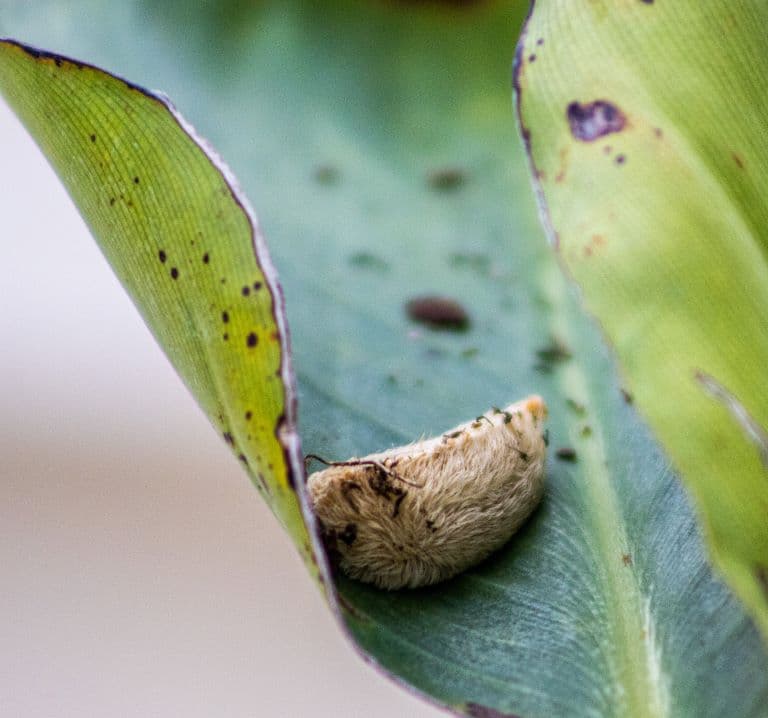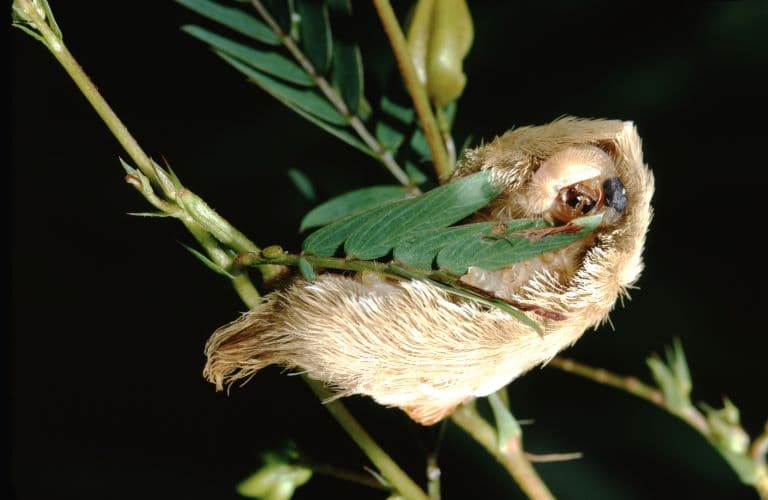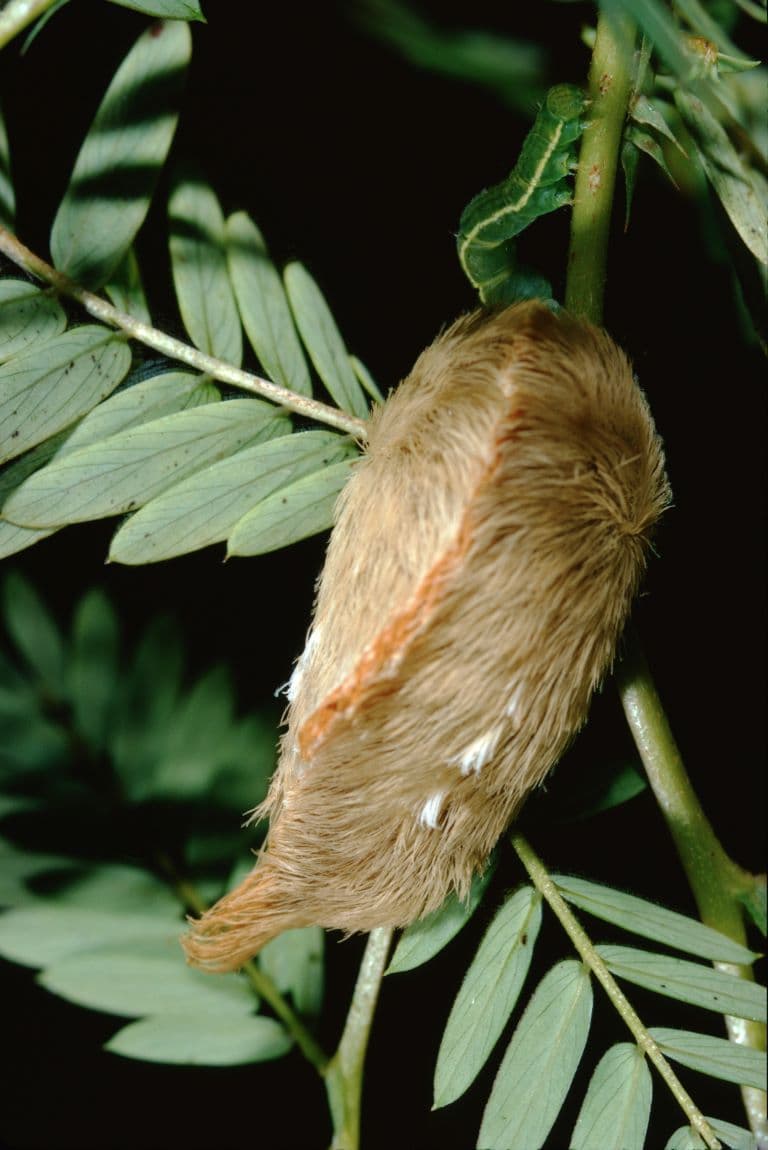Puss CaterpillarProfile
The fear of moths has always been one of those things that make you wonder how a person could have survived into adulthood.
There’s very little as benign as a lightweight feathery animal made mostly of dust, and to instinctively cower from them seems like a deleterious malfunction that natural selection should have removed long ago.
The Southern flannel moth is about as harmless as it gets, but this comes with a pretty glaring caveat: to reach adulthood, this moth goes through a larval stage that has one of the most brutal stings in the insect world.

Puss Caterpillar Facts Overview
| Habitat: | Wooded areas, forests |
| Location: | The Americas |
| Lifespan: | Unknown, >1 year |
| Size: | Up to 6 cm (2.4 in) long |
| Weight: | Not reported |
| Colour: | Golden yellow |
| Diet: | Foliage of oak, elm, wild plum, deciduous shrubs |
| Predators: | Unknown |
| Top Speed: | Slow |
| No. of Species: | 1 |
| Conservation Status: | Not Listed (IUCN) |
The adult Southern flannel moth, or puss carterpillar, is the polar opposite of its larval form. Short-lived, harmless and gentle.
But it spends a mere fraction of its time being this way, and the majority of its life it walks around on too many legs, causing insufferable pain to anyone ignorant or unfortunate enough to interact with it in the wrong way.
Also known as the asp, this is an insect with a surprising talent – one which it acquired millions of years ago by stealing genes from bacteria.
Interesting Puss Caterpillar Facts
1. They’re flannel moths
Puss caterpillars are members of a generally very fluffy family of moths known as the flannel moths. This family spans North America and the tropical regions of the Americas and contains around 11 known species.
All these moths are ludicrously hairy, and their caterpillars are generally known as puss caterpillars on account of their luxurious, exotic cat-like fur.
But it’s really just this species, Megalopyge opercularis, that everyone is talking about when they mention puss caterpillars, and we’ll soon talk about why. This species is also sometimes called woolly slug, opossum bug, tree asp, and Southern flannel moth.

2. They’re leggy
Insects have six legs, that’s kind of their thing. But caterpillars would struggle to lug their bulbous, trailing butts around using only the three pairs of spindly legs located just behind their necks, so they come with a set of what’s called prolegs, or pseudopods.
These are non-jointed limbs that are often like small, fleshy suction cups and sit at the other end of the larva. They work just like legs but they disappear when the caterpillar mutates into its final form.
Most species have something like five or six pairs of these prolegs, but puss moth caterpillars have seven pairs! This extra pair of legs reflects the ability of this caterpillar to kick the ass of any predator dumb enough to try it. 1
3. They hurt
Here’s where we get into the reason for this species’ infamy. The puss caterpillar packs a serious punch in the form of stinging hairs.
The luxurious fur coat of this animal is actually a powerful defensive weapon that injects its attackers with a curious toxin that appears to come not from the long and soft guard hairs, but from hollow, specialised hairs located within them.
Little is known about this toxin, but it looks like it’s stored in tiny venom sacs at the base of these hairs, and causes localised necrosis of the affected tissues, much like a cytotoxin.
People stung by this caterpillar report pain varying from annoying to intense. The sting starts off sharp and isolated, like tiny burning needles, and about as painful as a wasp or hornet sting.
Within several minutes as the toxins enter the lymphatic system, increasing, aching pain can radiate down the affected limb and the nodes become inflamed and sore.
After an hour or two, the systemic pain subsides and within two days there are not usually any persisting symptoms. But this isn’t always the case. 2 3
4. They can be dangerous
There are a lot of painful insect stings and bites, but (at least when you remove the factors of allergic reactions and disease vectors) rarely are insects directly dangerous.
Spiders, on the other hand, have nearly a monopoly on lethality in the arthropod world, which is why even the bullet ant ritual in Brazil, despite being one of the most excruciating physical experiences a human can endure, is relatively harmless in the long run.
So, it’s unusual to find an animal like the puss caterpillar, whose sting can cause a shopping list of potentially dangerous symptoms more commonly associated with black widow venom.
Headaches, nausea, vomiting, intense abdominal distress, swollen or infected lymph nodes, and sometimes shock or respiratory stress, though the worst of the symptoms are typically associated with anaphylaxis.
Records are patchy, but there are at least three hospitalisation reports from Texas and even cases where convulsions ensued.
Incidentally, one of the most dangerous venoms in the insect class is another moth, known as Lonomia obliqua, which has killed at least one person. 4

5. Gene transfer
The alarming power of this caterpillar comes with a surprising origin story. The genes that code for the toxins that give people so much grief don’t come originally from the caterpillar itself, but from some bacteria that its ancestors were exposed to millions of years ago.
The main compounds in the venom come from a family of molecules found in disease-causing bacteria like E. coli and were adopted by the DNA of the caterpillar by what’s called horizontal gene transfer. This explains why the mechanism of action, involving the toxin punching holes into cells, is the same as in many bacteria.
In this case, the moth’s ancestor would have had its cells punctured by the bacterial attack and somehow managed to incorporate some of the bacterial DNA into its genes, specifically the sperm or egg cells, so that it was hard-wired into the germ line and passed on vertically through generations.
It’s very rare that this process is ever documented, but not entirely unusual in lepidopterans; in fact, it’s happened multiple times independently, which is how there are several surprisingly venomous caterpillars dotted around the planet.
But curiously, in every example, it’s only the caterpillar, and never the adult moth that’s venomous – so people afraid of moths are still being ridiculous.
One other thing to mention is that this process of puncturing cells may have some handy application in the treatment of cancers or as a sort of nano-technology for injecting individual cells with beneficial treatments.
6. They use their toxic blanket as a cocoon
After a long life of being painful and flightless, these caterpillars make the move to a more aerial and less damaging existence and set to work creating the pupa stage during which they’ll metamorphose into a fluffy butterfly.
The hairy cover that served them so well is detached and woven with silk threads into a protective blanket, giving them one last layer of security as they pupate.
Two and a half months later, the adult puss moth emerges, fluffy and adorable, and entirely unworthy of terror.

7. If they didn’t sting, we might never have known them
Despite being rather widely recognised as a toxic caterpillar, there remains little information on this species, or even this family of moths and their life cycles.
For example, much of the literature extrapolates from cases of sting reports, which would likely be higher when the caterpillars are at their most prevalent.
These stings also give an idea of the distribution and range of the animal, but its lifespan, behaviour, natural predators and a bunch of other information is still missing.
Of the 160,000 known species of moth, this is just one, so without its enchanted cloak of burning, it’s likely to have been lost in the crowd.
Puss Caterpillar Fact-File Summary
Scientific Classification
| Kingdom: | Animalia |
| Phylum: | Arthropoda |
| Class: | Insecta |
| Order: | Lepidoptera |
| Family: | Megalopygidae |
| Genus: | Megalopyge |
| Species: | opercularis |
Fact Sources & References
- “Flannel Moths”, Missouri Department of Conservation.
- Nathan Chandler Foot (1922), “PATHOLOGY OF THE DERMATITIS CAUSED BY MEGALOPYGE OPERCULARIS, A TEXAN CATERPILLAR”, NIH.
- Jack’s World of Wildlife (2024), “WHAT Happens IF YOU Get STUNG BY An ASP CATERPILLAR!?”, YouTube.
- John P. McGovern (1961), “Megalopyge Opercularis Observations of Its Life History, Natural History of Its Sting in Man, and Report of an Epidemic”, Jama Network.
